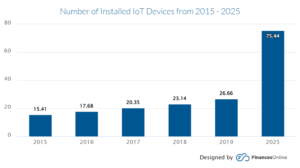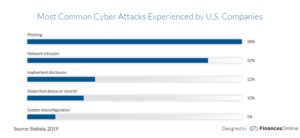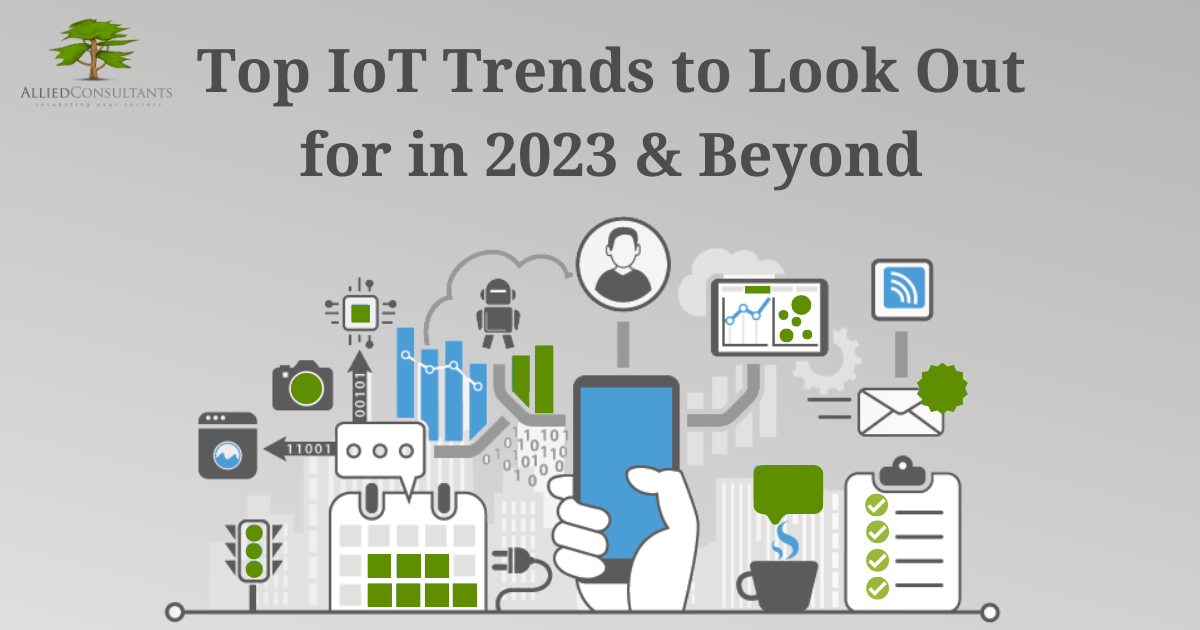Top IoT Trends To Look Out For In 2023 & Beyond
Over the last few years, the Internet of Things (IoT) has paved the way for gaining considerable heed, thanks to the increased business demands for doing things securely, cheaply, and tightly. So, the experts expect features like security, monitoring, and manageability for operational technologies will revolutionize several sectors.
What is the Internet of Things (IoT)?
Before exploring the top trends likely to hit in 2023, let’s first dig into the Internet of Things (IoT).
Through telecommunication, the Internet of Things (IoT) enables items to exchange data with their operators, producers, and cooperating devices. It also allows the network of physical objects to connect to other devices and systems over the internet and exchange data by embedding sensors, software, and other technologies.
Also, read this: What Are The 5 Things That the Internet Of Things Will Trigger?
Due to machine learning (MI), artificial intelligence (AI), automation, edge computing, and other developing technologies, IoT is quickly becoming a crucial disruptive technology. And it has begun to affect our lives and industries since it makes communication possible for equipment and machines.
According to the Statista Research Department, the analysis predicts that more than 75 billion Internet of Things (IoT) connected devices will be used. This would represent a growth of almost three times the installed base of IoT in 2019.

The IoT Industry is expanding quickly, and it will do so for many more years to come. The following 5 trends are anticipated to emerge in 2023 and beyond:
1. IoT In Manufacturing:
IoT provides manufacturers a broader range of opportunities to develop new, connected products and structure the service-based business models around them. The technology connects the device data with IoT-based smart manufacturing to increase operational effectiveness and avoid downtime. When automation is used, even far-reaching equipment can cooperate and work as one when implemented. This makes it possible for flexible production methods to scale up easily and react quickly to market demand.
IoT utilizes sensors, which might assist managers in spotting mechanical issues before they become serious. The system regularly monitors all crucial metrics to ensure smooth and effective operations and output. Additionally, thanks to wearable technology, IoT sensors will help workers see the safety and working conditions in the workplace by receiving instant alerts or notifications in a crisis, reducing downtime and quality problems.
All in all, IoT allows for the identification and prediction of various risks by considering all aspects of the manufacturing process as well as the overall health of the business.
2. Increased Focus On Security:
According to a Kaspersky study released in the first quarter of 2022, 43% of firms have insecure Internet of Things infrastructure, and cybersecurity worries continue to prevent the installation of IoT devices. Moreover, with the increasing number of IoT devices installed, network hacking has become commonplace, and attacks against the connected device network are still possible. It is crucial to alert people about security problems in the early stage.

Businesses now emphasize security as IoT adoption grows for data and physical equipment. To ensure data encryption and make customers’ devices physically secure, the IoT platform provider must collaborate with the security providers. As a result, customers will only care about security development and deployment.
Because of the complexity of the IoT ecosystem and the enormous number of devices from several vendors throughout the world, developing security protocols for IoT is constrained by the absence of existing standards. However, businesses are learning how to combat IoT security breaches with practical new techniques, and it is expected to achieve this milestone by 2023.
3. Remote Health Monitoring System Using IoT:
The health sector has been exploring the Internet of Things technologies for years. The significant advantages of health monitoring increase because technological improvements make many IoT devices more affordable and widely available.
Like industries, healthcare facilities are enormous and equipped with the most recent technology. Wearable sensors, devices, tracking, and indoor navigation technology are also used in healthcare. Sensors continuously monitor patients to gather processed, saved and evaluated data.
The system uses IoT to warn a doctor of any severe symptoms so that the doctor can deliver a prescription. The information includes temperature and heartbeat tracks via an IoT-based health monitoring system. Additionally, it uses an LCD, Arduino, and microcontrollers to display the patient’s temperature and heartbeat data along with time stamps. Resulting in the patients getting early treatment options and helping doctors predict outcomes.
4. IoT Governance:
A governance structure that assures appropriate conduct in creating, using and deleting the information associated with the Internet of Things (IoT) initiatives will become more critical as the technology grows in the coming years. Putting IoT into practice and creating online services via which the government can offer services like issuing identification cards, citizenship documents, papers for registering property, etc.
The usage of IoT in the government sector can typically save time and money for both the government and the people it serves, enabling them to have the smooth execution of routine duties while concentrating on challenging long-term objectives.
Moreover, IoT and big data-powered disaster management and preventive solutions can be helpful for governments in saving lives during natural disasters. IoT sensors can be deployed in trees where forest fires are common to help identify flames early and stop them before they spread and have catastrophic consequences. IoT can also help flood-prone areas by monitoring water bodies and alerting authorities when water levels increase at risky rates.
It will take time and effort to integrate IoT into government processes. Governments can take on a full supervisory role and protect the public interest without interfering as IoT adoption and proliferation rise.
5. The Emergence Of Smart Cities & Smart Buildings:
Several US communities already use IoT to link utilities, parking meters, and traffic signals. In the coming years, businesses are expected to increasingly use smart building technology to improve the productivity and efficiency of their operations as smart devices proliferate, and this trend will undoubtedly become a global phenomenon.
IoT and smart technologies will focus on making people’s life comfortable and optimizing several city-related operations, as well as the social, environmental, and financial facets of urban living that these cities will all improve. Moreover, smart cities will play a significant role in enhancing sustainability, public transportation systems, and improving the quality of urban life as the population increases.
Wrap Up!
With new technology and access to information that we would not have previously believed feasible, the future of IoT is looking bright, and adoption is happening five times more quickly than the adoption of telephone and electricity combined.
We may anticipate more significant changes in industries like advertising and transportation. IoT in advertising will support the delivery of targeted advertisements and even help tailor items for specific clients. IoT in the future of transportation might lower traffic and make parking easier to find, contributing to developing a more effective transportation system. Hence, one can’t deny that IoT will continue to serve as the foundation for numerous technologies that revolutionize our lives. This is undoubtedly an exciting industry to be in right now!
Are you looking to integrate smart IOT solutions to keep pace with the ever-evolving market & stay ahead of the competitors? Then look no further than Allied Consultants. We provide customized Internet of Things (IoT) services to meet the specific needs of our clients. Click here to know how we can help you.



![[New Questionnaire] Self-discover your organiation’s Big Data Maturity Stage](https://alliedc.com/wp-content/uploads/2015/08/BD-Images-150x150.jpg)


![Big Data Hadoop Stack Training [Short Videos Part II]](https://alliedc.com/wp-content/uploads/2015/09/BigData_2267x1146_white-150x150.png)
